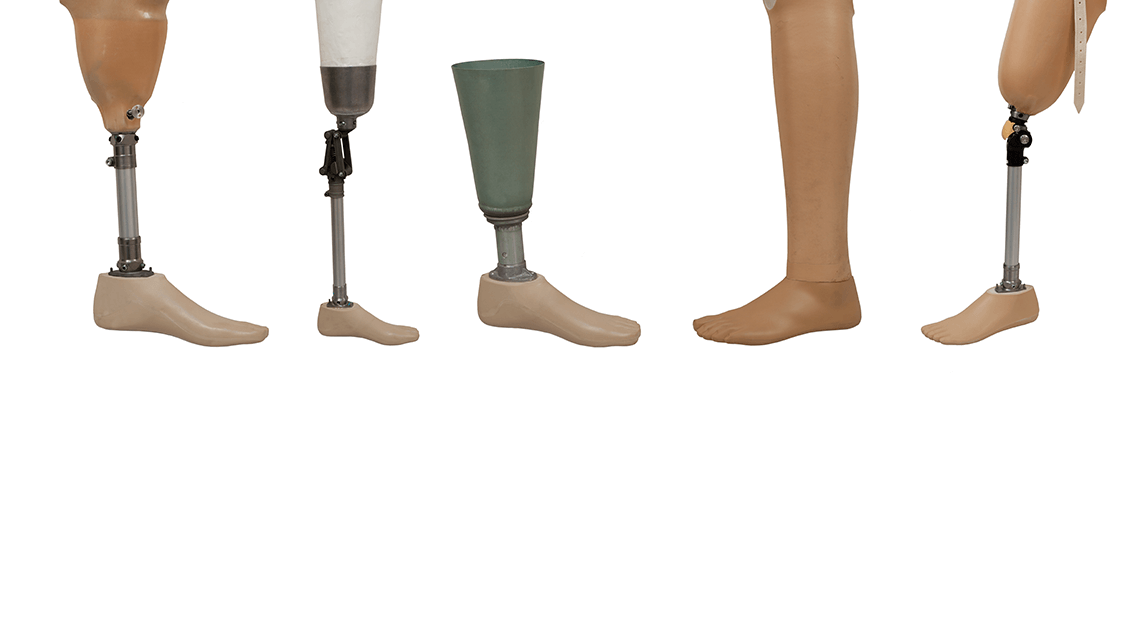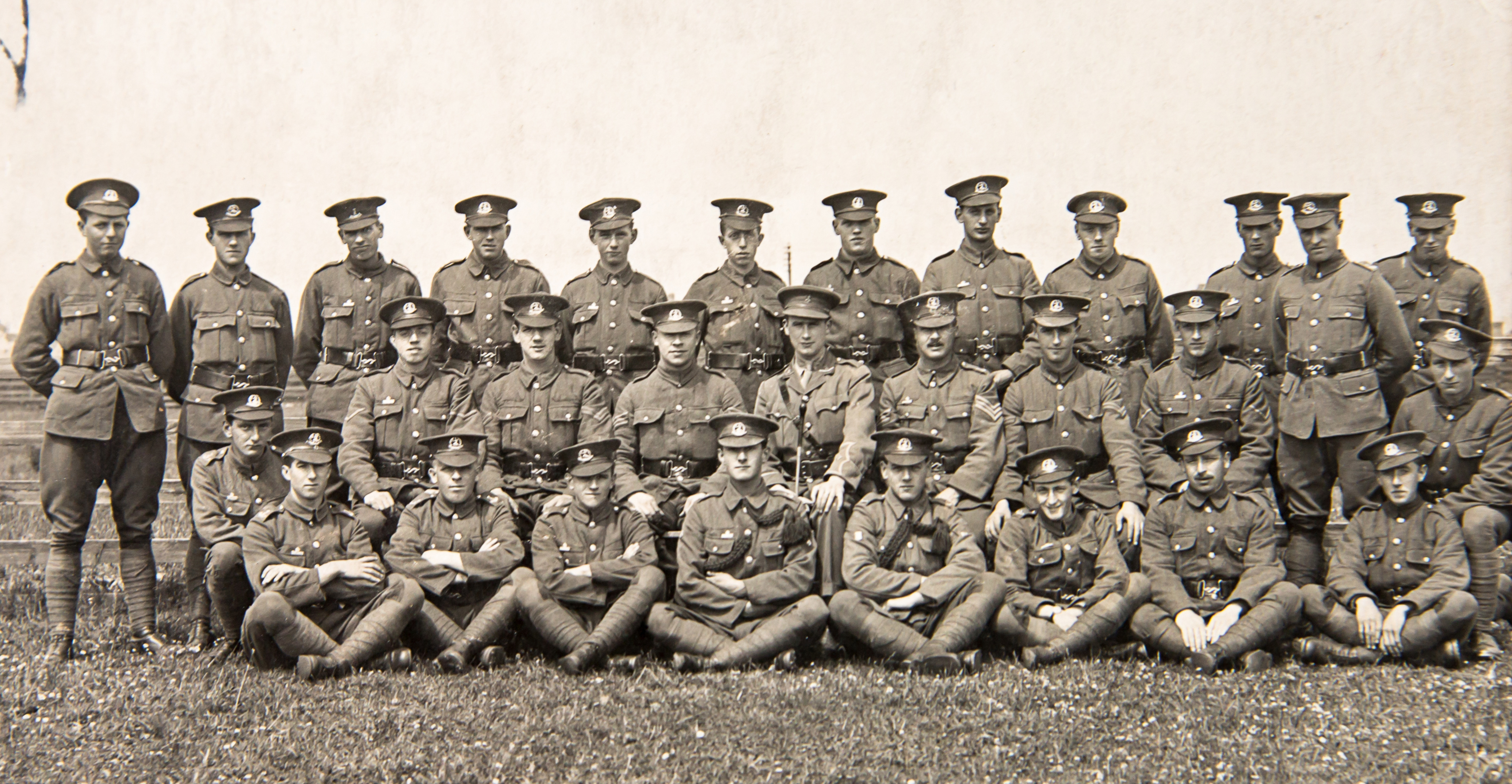In this article, disability consultant and quadruple amputee Helen Dolphin looks back at the history of prosthetics, reflecting on her own experience and advances in technologies.
Helen’s experience with prosthetics
It’s now over twenty years since I became a quadruple amputee and in that time I’ve seen some amazing developments in prosthetics. I used to really struggle with walking and was always falling over. However, I now have legs which incorporate microprocessor technologies. These tiny computers can detect minute movements and prevent my limbs from buckling. These legs have also enabled me to walk downstairs step over step, something I could never do before. I also have very realistic silicone covers on my feet which fool quite a lot of people into thinking they’re real.
Although prosthetic legs have improved in leaps and bounds, I feel developments in upper limb prosthetics have been quite a bit slower. In fact, I still use a split hook device which was designed over 100 years ago by an amputee called D W Dorrance. Although it’s not as aesthetically pleasing as the more robotic, hand-like prosthetic devices I’ve also tried, it is infinitely more useful, and I’ve not found anything yet that I consider to be as functional.
Whilst I consider my hook to be old fashioned, it is still relatively modern in prosthetic design, and unlike the first hand hooks of the dark ages, mine is considerably more refined, being individually fitted and cast and made from lightweight materials. But to really appreciate how far the field of prosthetics has come, it is necessary to look back in time.
Watch the video
In the video below Helen explains the changes she’s seen in prosthetics:
The first examples of prosthetics
In the year 2000 one of the earliest examples of a functional toe prosthesis was discovered on an Egyptian mummy, thought to date back to between 950 and 710 B.C. However, even before the toe’s discovery, prosthetics was known to be ancient technology as replacement body parts are mentioned prominently in the classical literature of multiple cultures. There were other discoveries such as the Capua leg, which was found north of Naples and thought to date back to 300 BC but after the ancient era, prosthetics barely improved until the 16th century. That was when Ambroise Paré invented an above knee device with knee lock control and other engineering features. He contributed some of the first major advances in prosthetics seen for many years and some of his inventions are used in today’s protheses.
The impact of war
Looking back through history it has been wars that have sparked many of the developments in prosthetics. In America the civil war in the 1860s created over 50,000 amputees including a man called James Hanger. Hanger was reported to have become the war’s first amputee casualty after being struck in the leg by a cannonball. He developed the “Hanger Limb” from whittled barrel staves and metal. His design used rubber bumpers rather than standard catgut tendons and featured hinges at both the knee and ankle. His prosthetic company Hanger Prosthetics & Orthotics continues to thrive to this day.
World War I maimed soldiers on a scale the world had never seen. The enormous numbers of returning veterans with amputations led to major gains in the technology of prosthetic limbs. Before the war, prostheses had largely been heavy and were often carved from a single piece of wood. Developments after the war led to limbs that were designed to be lightweight, functional and, above all, comfortable to use in everyday labour. In fact, many devices produced today have their roots in the technological advances that emerged from World War I.
Nonetheless following World War II, veterans were dissatisfied with the lack of technology in their limbs and demanded improvement. Since that time, advances in areas such as materials, computer design methods and surgical techniques have helped prosthetic limbs to become increasingly lifelike and functional. In the 1950s, major strides were being made in prosthetics with the introduction of the hinged knee.
More recently veterans of the wars in Iraq and Afghanistan have helped to push prosthetic technology once again. Although diabetes is now the number one cause for limb amputation it is still the veteran population that drives many advances in the field.
Special limbs can now be created for different sports and the use of running blades by amputee athletes has enabled them to compete in non-disabled events. However, these limbs are so good that they are thought to potentially give an unfair advantage.
Today, advances in robotics technology are pushing the field ever closer to prostheses that function almost like the real thing and it was recently announced that scientists at the Rehabilitation Institute of Chicago have designed the world’s first “thought-controlled” bionic leg.
Looking back through history, legs have advanced enormously from heavy, unwieldy wooden “peg legs” with no moving parts to microprocessor controlled knees and ankles that can read a person’s gait. I have certainly benefitted from the improvements and I look forward to what the future may bring. Although I’m very adept with my hook there are still a lot of tasks I would love to be able to do and I’m hopeful that in my lifetime a hand will be developed that works more like the real thing.
Related Articles
Helen Dolphin answers your questions
My Motability Scheme experience
Adaptive clothing for people with disabilities
![]()






